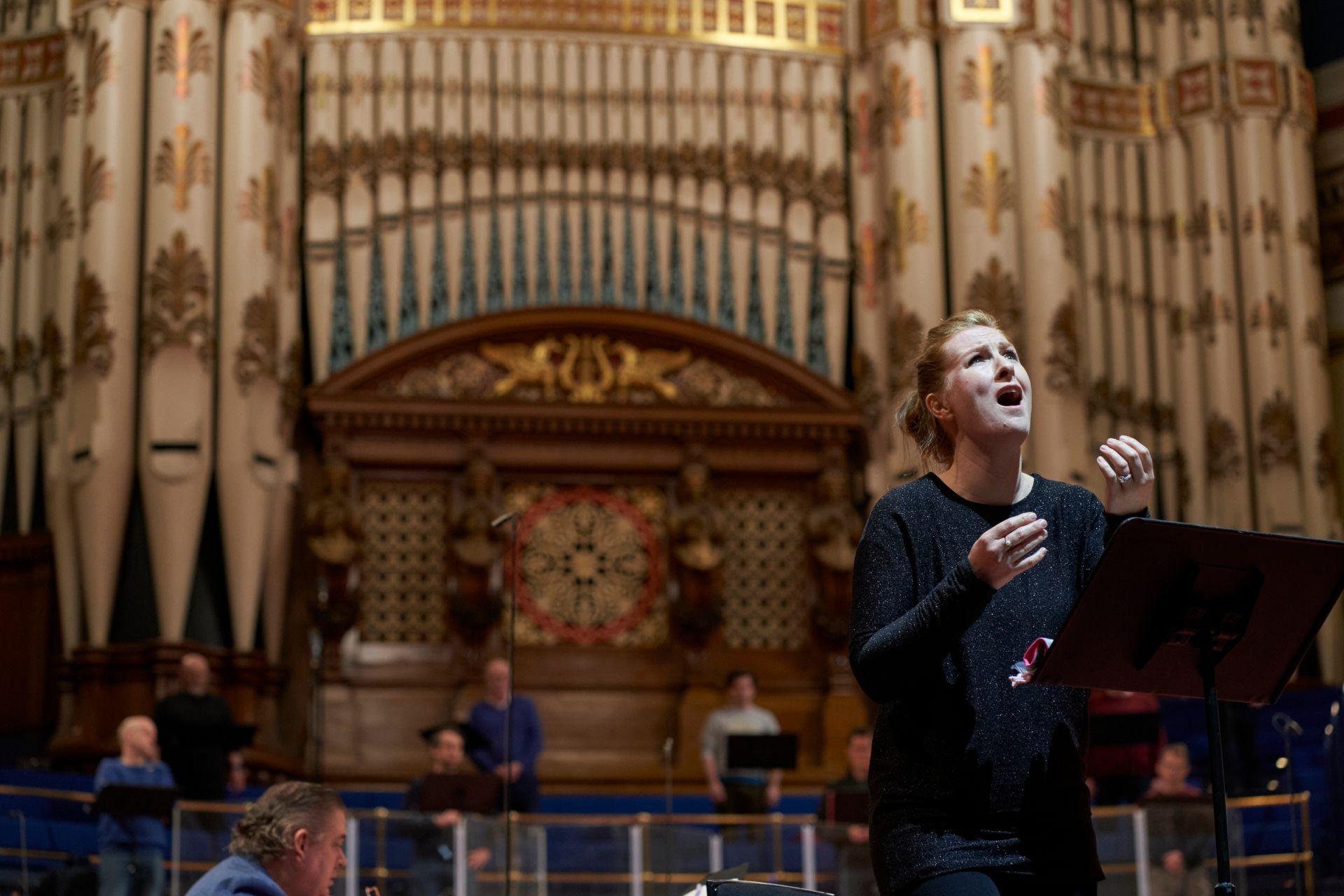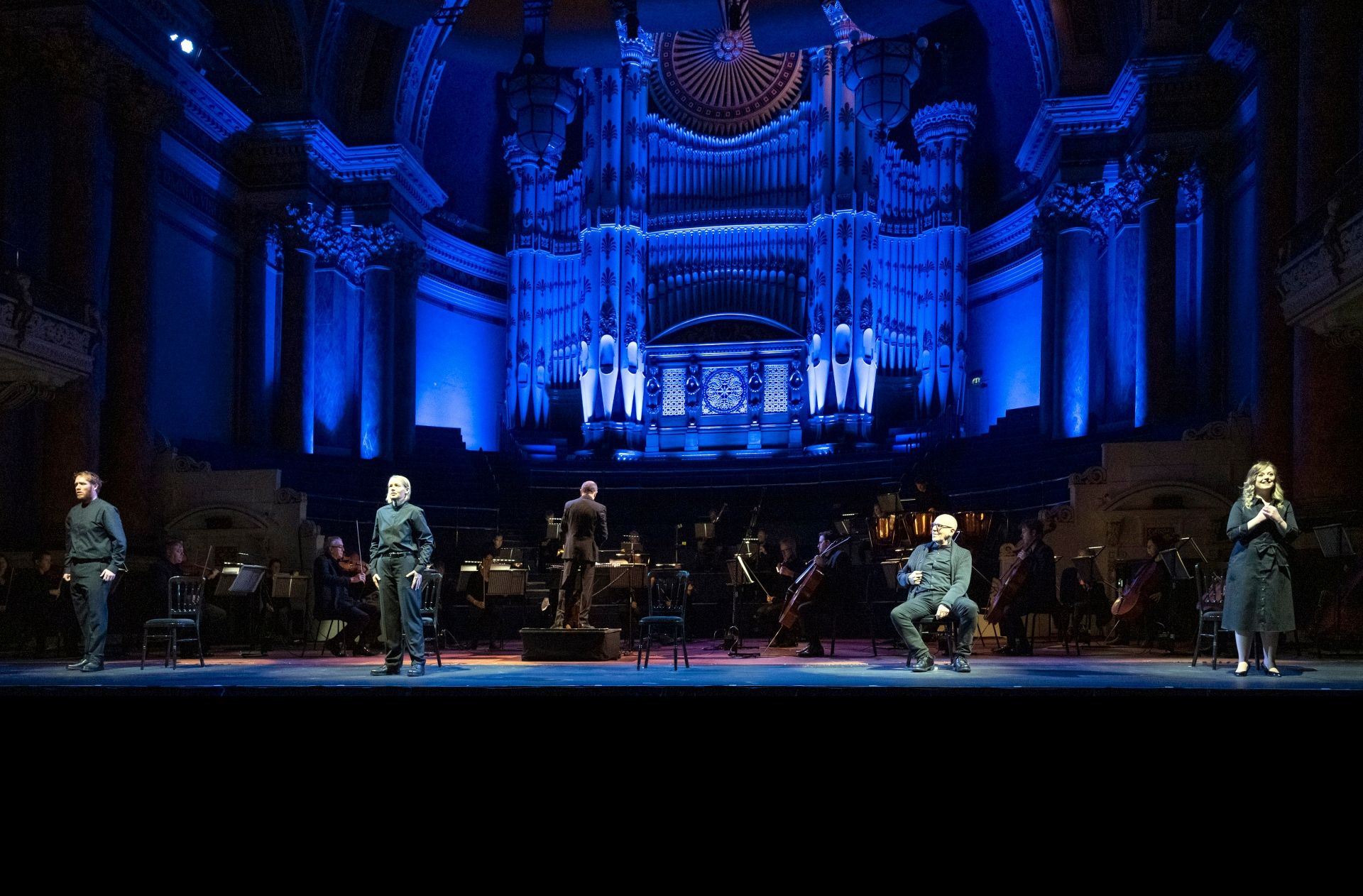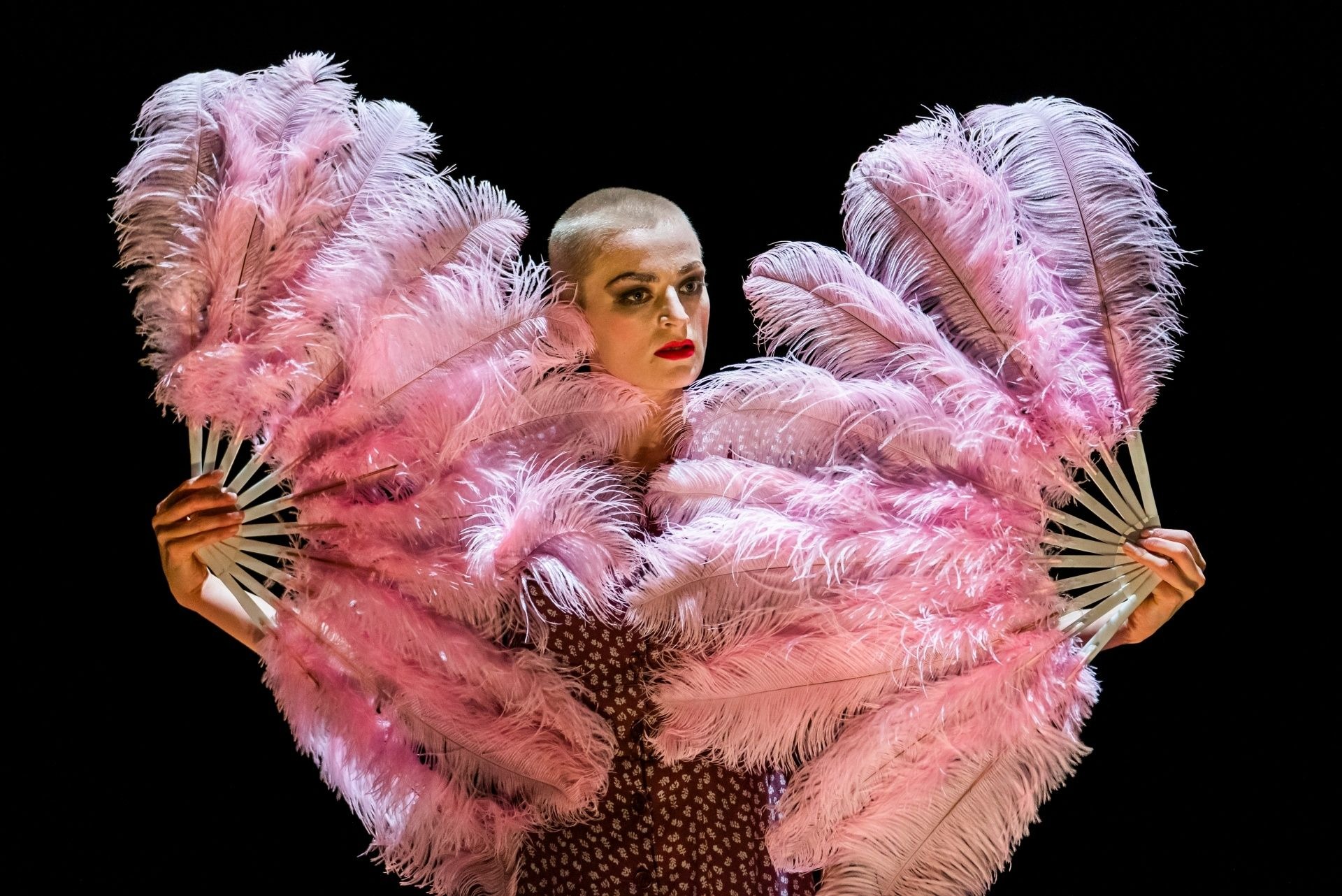James Brining’s new production allows the genius of Mozart to shine—albeit through some occasionally confusing symbolism.
The famous overture to the opera is struck up by the orchestra of Opera North—who are throughout the night on fine form—as the curtain rises to show a child going to bed. Her role—although silent and virtually completely disconnected from the action—will persist throughout the opera, and implies that the action of the opera is, in fact, the content of her dream. This made sense in as much as Schikaneder’s libretto essentially imagines a dream world, but the conceit seemed somewhat inconsistently applied because the child disappeared from the stage for stretches of the opera—at times, for long enough to forget the conceit entirely until she came back on stage.
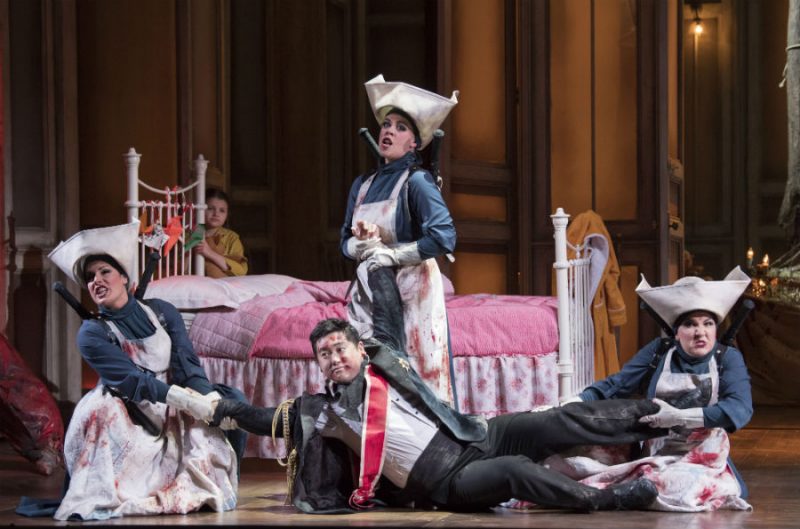
Behind the child’s bed and behind the seven sets of doorways which form the fixed but mobile backdrop to the scenes, there is a dinner party going awry. This action is a little hard to follow, being obscured by the doorways and owing to the anonymity at this stage of the figures’ identities. However, I could discern that, at the head of the table, sat the opera’s hero, Tamino (sung here by Kang Wang) in princely uniform. This dumb-show is all Vorspiel to the actual opera, and was added by this production. It seemed to have little to do with the original Zauberflöte (the opera’s German title) itself, and consequently felt somewhat tacked on and at odds with the text.
Nevertheless, things are mostly rectified by the time Tamino has moved to the centre of the stage, whereon he sings the opera’s first aria, “Zu Hilfe!”, in which the hero asks the gods to save him from the nightmarish apparitions he sees—in this production, two rather (and intentionally) amusing monstrous appendages entering from stage left and right, which remind one of something from an ’80s creature feature, and which provoke much audience amusement.
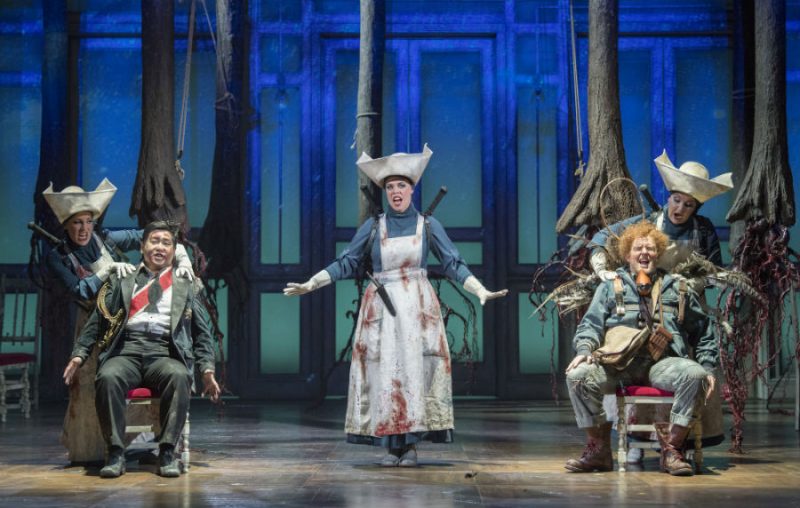
He is rescued by the three Ladies (played by Lorna James, Helen Évora and Amy Payne) who serve the Queen of the Night (who, played by Samantha Hay, will later virtually steal the entire show). The Ladies are oddly attired, their hats resembling those from the recent television adaptation of Margaret Atwood’s The Handmaid’s Tale. They also wield rather puzzling glowing, sci-fi swords which don’t quite resemble light sabers, but neither do they resemble anything else more closely instead. Having not seen The Handmaid’s Tale, the significance of the outfits was generally lost on me.
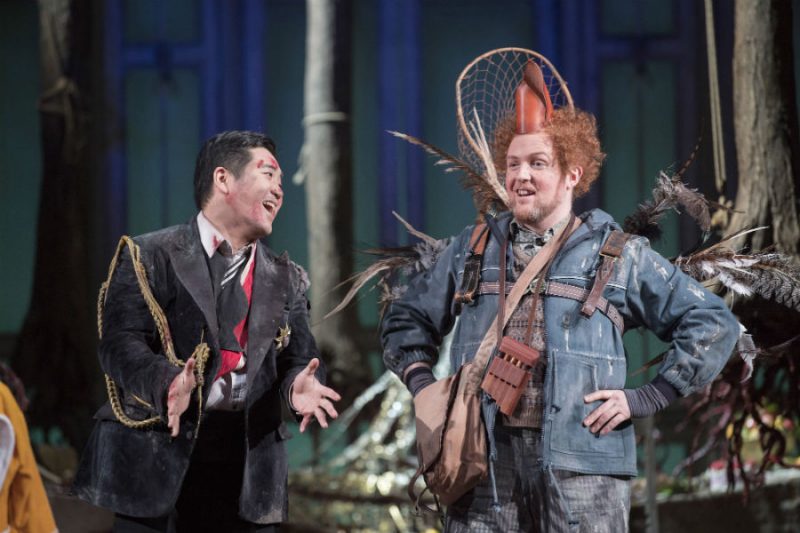
After the Ladies’ becoming besotted with and arguing over Tamino, they briefly withdraw and the wonderful, show-stealing Irish Papageno (Gavan Ring) enters the stage to sing one of the opera’s most charming and memorable arias, “Der Vogelfänger bin ich ja” (“Indeed I am the bird-catcher”!). His costume is a delightful mess of wing, net and workman’s clothing. In some slightly less engaging exposition, the Ladies commission the quest from Tamino and Papageno which makes up the opera’s (slightly thin) plot: this is that they rescue the heroine, Pamina (Vuvu Mpofu), daughter of the Queen of the Night, from the clutches of Sarastro (John Savournin). (As it turns out, Sarastro is good and the Queen of the Night and her Ladies are the force for evil. It is an ally of theirs, Monostatos (John Findon), who holds Pamina captive and who only really nominally belongs to Sarastro’s religious community.) The Ladies present Tamino with Pamina’s picture, whereon he sings another of the opera’s famous and most lovely arias, “Dies Bildnis is bezaubernd schön” (“This picture is bewitchingly beautiful”).
The section is rather marred at this point, however, by a video projection of Vuvu Mpofu’s Pamina, looking rather unconvincingly melancholy, and gazing around out of the frame at nothing in particular. The implication here seems to be that this “Bildnis” is so “bezaubernd” that it is literally a moving picture. But this is surely wrong: the “Bildnis” is not “bezaubernd”, but “bezaubernd schön”. At any rate, the video projection was definitely not “bezaubernd schön”, but rather inaugurated the production’s mildly irritating tendency of interrupting and distracting from the most beautiful parts in the opera’s writing with extra decorations which detracted from, rather than contributed to, its effect.
The Ladies give Tamino the titular magic flute, and the Papageno a set of bells, which are key in what is perhaps the opera’s most beautiful scene towards the end, and so ends the scene. The conclusion of the first of the two Acts is then taken up with Pamina’s escape, with the help of Papageno, from Monostatos, who, like the Scarpia of Opera North’s Tosca opera could end here, but Tamino and Papageno are to be tested—in the second Act.
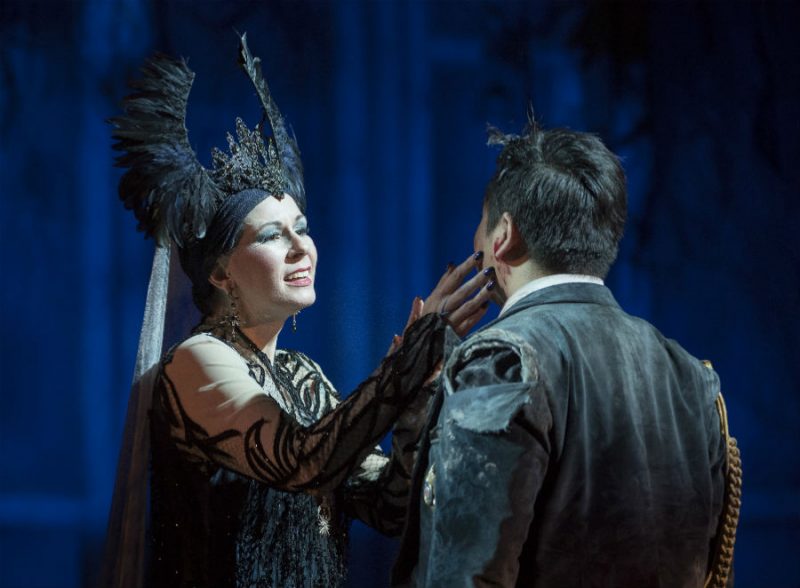
After a wine-sodden interval, we join Sarastro and his company at dinner. They are made up ambiguously: on one interpretation, they could be cult members; on another, a legitimate religious sect. The production does do quite a good job at playing with the uncertainty in the characters’ dispositions towards good or evil in its ambiguous costuming. Like the last part of Act I, the first part of Act II is not so dramatic, and Schikaneder’s limitations as a dramatist are here somewhat on show. However, there are opportunities for a number of beautiful and famous arias, such as Sarastro’s hymn “O Isis und Osiris”, sung beautifully by Savournin and the choir of Sarastro’s followers; The Queen of the Night’s great “Der Hölle Rach” (Samantha Hay’s performance of which deserves special praise, which I offer later in this review); and Tamina’s “Ach, ich fühl’s”, which Vuvu Mpofu delivers beautifully.
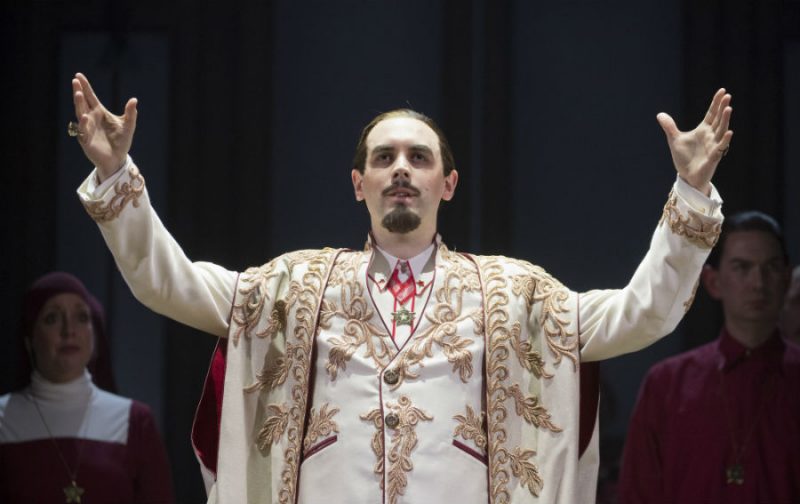
This last mentioned aria comes when Pamina believes Tamino has come to scorn her love (actually, he is faithfully keeping the vow of silence required of him by Sarastro as part of his test for spiritual advancement). By the end of the opera, of course, the two lovers are reunited, whereon they successfully undertake the remaining trials by fire and water under the protection of the magic flute (as well as their love) and join Sarastro’s company. Again, the video projections during the fire and water trials was irritating, but worse were the sound effects which accompanied them. If I wanted the sound of pouring water played over Mozart’s music, I could easily replicate this at home by turning on the tap. It was not an impressive addition.
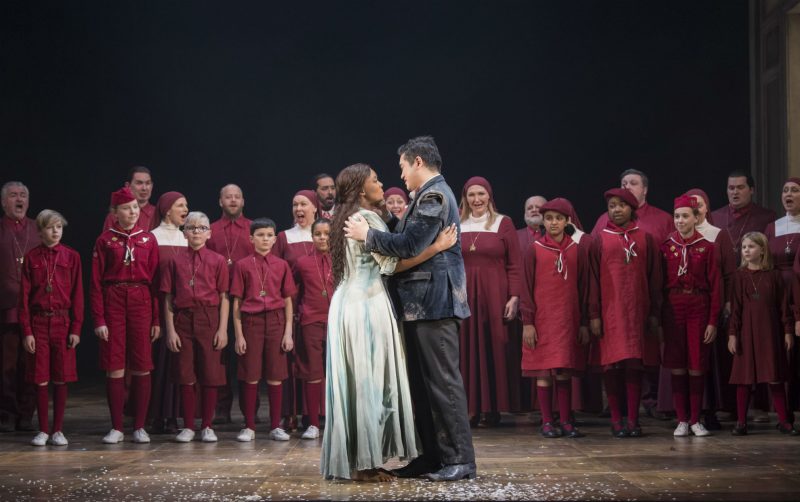
The epilogue to the main plot is the banishment of the Queen of the Night and her followers (viz., the three Ladies and Monostatos). But of course, the story is comedic, and the real high point is also the most comic—the marriage of the low comic relief character Papageno (originally played by the librettist Schikaneder, and so in some sense the soul of the story and the opera) to the woman ‘made for him’, Papagena (Amy Freston, who had impressed in her larger role in The Merry Widow a few months ago). This results in one of the simplest and most beautiful duets in the canon, “Pa–, Pa–, Pa–, Papagena!”, which, with the surrounding comic ending, creates a great reciprocal feeling of joy in the theatre as the curtain comes down, and goes up, to a huge applause. I might complain briefly here that at the end the women in Sarastro’s company, who had been dressed as nuns, took off their headdresses in their moment of enlightenment, as if to say that the practices of nuns and other religious devotees are somehow unenlightened—itself a very dim view. But this did not detract too much from the general sense of comedic joy at the opera’s end.
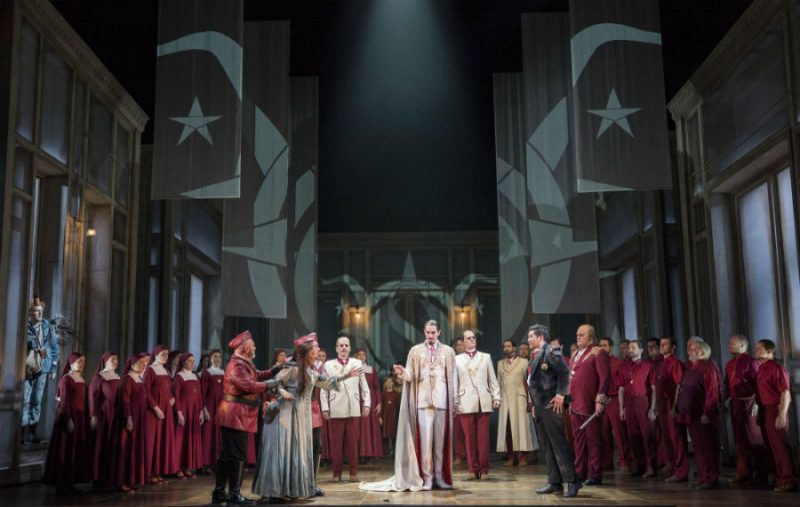
As for the music: as I have already said, the orchestra of Opera North were on great form from the start of the evening through to the end. They responded well to the great beauty of Mozart’s writing and orchestration, conveying his genius clearly and effectively. The cast of singers was consistently strong, although some were a tad quiet: John Savournin’s Sarastro, a deep and lovely bass, sometimes did not quite project sufficiently for me to hear all of his important dialogue and exposition. Similarly the Three Boys (played by an alternating group of six), although beautiful of voice, were a tad quiet and thus at times unintelligible. These points were especially important since this production was in English—not Schikaneder’s original German—and we had not therefore the sur-titles on screens beside the stage which are usually present at Opera North productions, meaning that we were completely reliant on clarity in speech and song to convey the information necessary for understanding the plot. I must also add that Jeremy Sams’ English version was excellent.
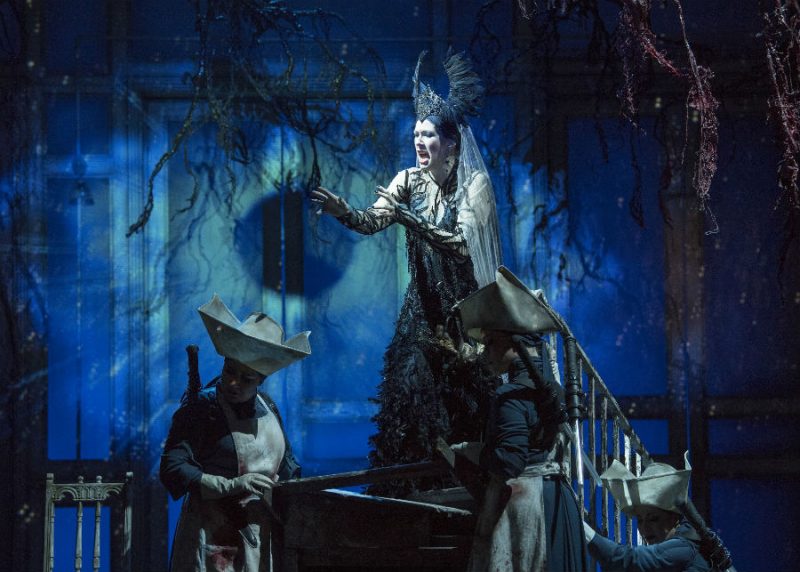
The greatest vocal performance was Samantha Hay’s Queen of the Night. Of course, one hears her famous aria, “Der Hölle Rach”, many times in one’s life—even without ever once going to the opera—but that Hay (and the orchestra) made this well-worn classic sound as fresh and thrilling as if it had been written yesterday was an amazing accomplishment, and has proved in the days since the most memorable part of the performance.
Overall, although there are a couple of flaws in this production, the beauty and greatness of the opera is clearly communicated by a very professional cast and team, and will afford to those who go a great and memorable evening, replete with some of the finest music ever written for the stage.
www.operanorth.co.uk
All photographs provided by Opera North.

